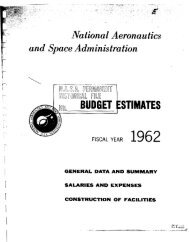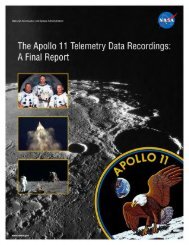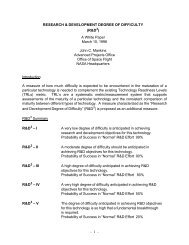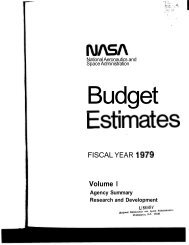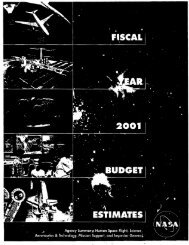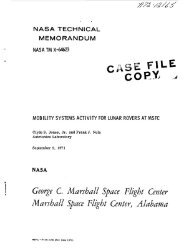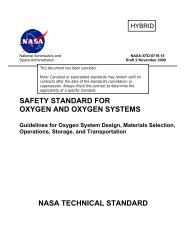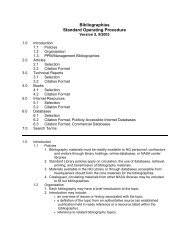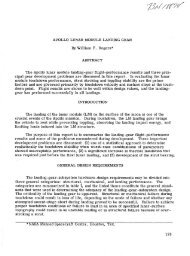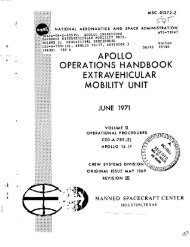crimping, interconnecting cables, harnesses, and wiring - NASA
crimping, interconnecting cables, harnesses, and wiring - NASA
crimping, interconnecting cables, harnesses, and wiring - NASA
Create successful ePaper yourself
Turn your PDF publications into a flip-book with our unique Google optimized e-Paper software.
Page 52 of 114<br />
<strong>NASA</strong>-STD-8739.4 with Change 6<br />
10. STRIPPING INSULATION FROM CONDUCTORS AND CABLE<br />
10.1 Stripping Round Conductors<br />
Insulated wires shall be prepared in accordance with the following requirements:<br />
10.1.1 Insulation Removal. Stripping tools, used to remove conductor insulation shall be of the<br />
correct size <strong>and</strong> in correct adjustment <strong>and</strong>/or calibration (Requirement). The stripping tools shall<br />
be in compliance with paragraph 6.6.1 (Requirement).<br />
10.1.2 Damage to Insulation. After removal of the insulation segment, the remaining conductor<br />
insulation shall not exhibit any damage such as nicks, cuts, crushing, or charring (Requirement).<br />
Conductors with damaged insulation shall not be used (Requirement). Scuffing from mechanical<br />
stripping or slight discoloration from thermal stripping is acceptable (Requirement).<br />
10.1.3 Damage to Conductors. After removal of the conductor insulation, the conductor shall<br />
not be nicked, cut, or scraped to the point that base metal is exposed (Requirement). Conductors<br />
that were reduced in the cross-sectional area shall not be used (Requirement).<br />
10.1.4 Wire Lay. The lay of wire str<strong>and</strong>s shall be restored as nearly as possible to the original<br />
lay if disturbed (Requirement). The conductor shall be cleaned following restoration to the<br />
original lay (Requirement).<br />
10.1.5 Tinning of Conductors for Solder Cups. The portion of str<strong>and</strong>ed wires that will<br />
eventually become a part of the finished solder connection shall be coated with tin-lead solder<br />
<strong>and</strong> cleaned prior to attachment (Requirement). Additional flux may be used. The flux shall be<br />
applied so that it does not flow under the insulation except for traces carried by solder wicking<br />
(Requirement). Flux shall be removed with cleaning solvent applied so that its flow under the<br />
conductor insulation is minimal (by avoiding use of excessive solvent <strong>and</strong> positioning the<br />
conductor so that the gravity keeps the solvent from flowing under the insulation) (Requirement).<br />
Flow (wicking) of solder along the conductor is permitted but shall not mask the conductor<br />
str<strong>and</strong>s at the termination end of the insulation (Requirement).<br />
NOTE: For additional requirements, see the latest revision of<br />
<strong>NASA</strong>-STD-8739.3.<br />
10.1.6 Insulation Irregularity. Mechanical or thermal stripped insulation irregularity is<br />
acceptable if it does not exceed 1/4 of the outside diameter of the wire, including the insulation.<br />
10.1.7 Insulation Clearance.<br />
a. Soldered Connections.<br />
(1) Minimum Insulation Clearance. The insulation shall not be imbedded in the solder joint.<br />
The contour of the conductor shall not be obscured at the termination end of the insulation<br />
(Requirement).<br />
(2) Maximum Insulation Clearance. The insulation clearance shall be less than two wire<br />
diameters, including insulation, but in no case shall permit shorting between adjacent non-



